
Aaron Foyer
Vice President, Research and Analytics
How much leverage do Canada’s power exports truly give the country?

Aaron Foyer
Vice President, Research and Analytics
Niagara Falls has long captured the imagination of engineers and industrialists. At its peak flow rate, nearly seventy Olympic-sized swimming pools’ worth of water crest over the falls every minute before dropping 50 meters into the Niagara River below.
The total energy released from that water can be appraised using what’s known as gravitational potential – the energy something has because it’s high and can fall. Estimates peg the total energy released by Niagara Falls at ~1.5 gigawatts, roughly one and a half nuclear reactors. The prospect of harnessing even a fraction of that is compelling and dates back to before modern electrical systems.
First power: In 1853, the Niagara Falls Hydraulic Power & Manufacturing company was established to use the tumbling water to help run mills below the falls. It wasn’t until the late 1870s, after Thomas Edison dazzled onlookers with the use of electricity in his own home, that a frenzy of electrification took hold.
In 1896, engineers finally produced power harnessing water from Niagara Falls to help electrify Buffalo just a few miles down the road.
Parts of the Niagara River act as a sliver of the US-Canadian border, transecting the two neighbors for a stretch. The first Niagara power station was setup on the US side using the northern American Falls and it was not long before the Canadians eyed their own, using the southern Horseshoe Falls. Canadian Niagara Power (CNP) eventually completed the first Canadian Niagara power station in 1899.
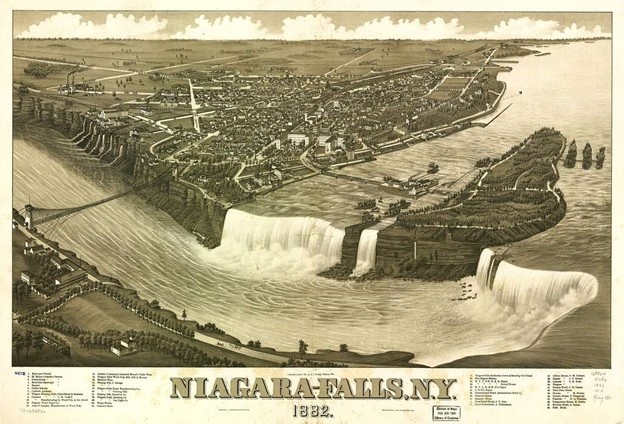
A drawing of Niagara Falls prior to hydropower development // Wikipedia Commons
Initial trade: Two years later, Buffalo played host to the 1901 Pan-American exhibition. To be a friendly neighbor, CNP ran cables across a local arch bridge into the US to provide power and help the Rainbow City become the City of Light. This would go down as the first electrical trade between the US and Canada and one of the first international power purchases ever.
Since then, the US and Canada have only increased reliance on each other’s energy and infrastructure. Vast rivers of the north now power great cities in the south. In periods of Canadian drought, American abundance comes to the rescue. And during global energy shocks, it’s domestic power supplies that act as international shock absorbers.
And then, war: It was thus surprising when the Trump administration’s tariff-by-tweet regime took aim at Canada. In response, Ontario Premier Doug Ford threatened to add a steep export tax on the province’s power exports to the US and even to “shut off electricity completely.”
While both political mastiffs have since backed down, President Donald Trump’s tariff threats have an on-again, off-again rhythm that gives Ben Affleck a run for his money. Given the president chose Stephen Miran, a Harvard economist who recently penned an influential pro-tariff paper on how to restructure the global trading system, as his choice for Council of Economic Advisors chairman, it seems likely tariffs will rear their head again.
When they do and with the president’s known love of dealmaking, how much leverage do Canada’s power exports truly give the country in managing the art of the deal? Can Canadian power avert a trade war? Let’s dig in.
Ever since Niagara Falls helped power the Buffalo world fair, the US and Canada have only grown in their electrical interdependence. While there were small levels of trade in the 60 years that followed, it was in the 1960s that the two countries truly became both literally and figuratively connected.
Go with the flow: In 1961, the US and Canada signed the Columbia River Treaty, with the US prepaying to help build three dams in British Columbia’s upper Columbia River in exchange for both power and flood control.
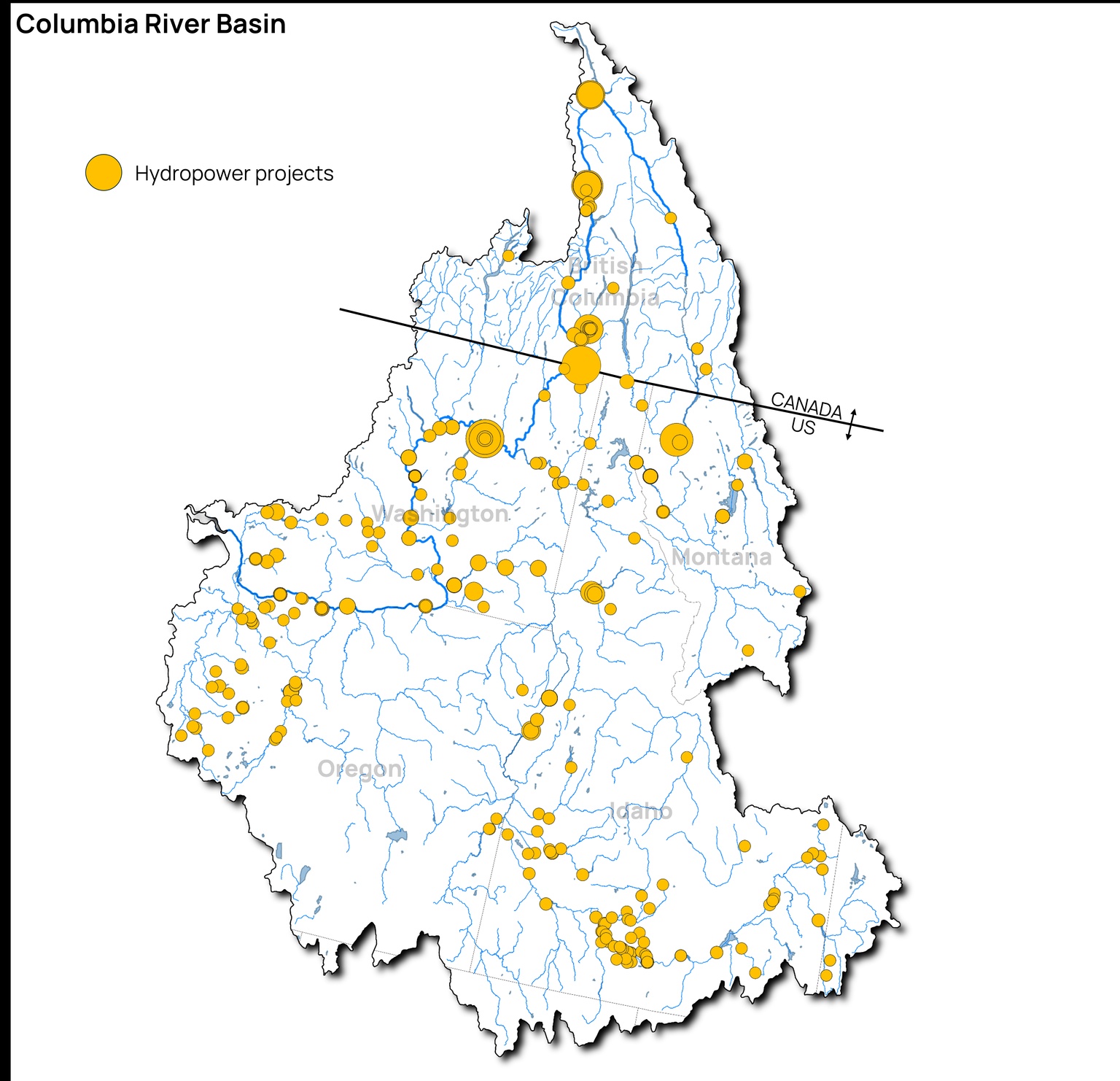
Map of the Columbia River Basin // Orennia
The following year, the US lent Quebec $300 million to help Hydro-Québec acquire most of the remaining private power producers in the province and create one of North America’s largest public utilities. From there, large hydropower projects like James Bay in Quebec and Churchill Falls in Newfoundland helped Canada generate three-fifths of its power from hydro with extra to export to the US.
Current status: As a result of decades of investment, the Canadian and US power grids are now tightly integrated. Between the lobster catchers of New England and the whale watchers of the Pacific Northwest, 37 major transmission lines now connect Canadian and American electric infrastructure.
And contrary to popular belief, electricity trade is not entirely one way. From 2015 to 2022, for every six gigawatts Canada exported to the US, it imported one back.
But a few years ago, that all changed.
In 2023, Canada experienced its hottest summer since 1940, leading to below- and well-below-average levels of precipitation in many parts of the country. As a result, annual Canadian hydropower generation fell nearly 9%, leading to a year-over-year drop in electricity exports to the US of nearly a quarter. And 2024 saw no reprieve in either rainfall or snowfall.
Exporters→importers: Since the start of the drought, the hydro-rich independent grid of Quebec, with connections to both New York and New England, has been exporting significantly less power to the US than before. And at times, the province has even been importing.
Prior to the drought, Quebec Premier François Legault said he wanted Quebec to leverage its hydro resources to become the “green battery of the Northeast.” A less compelling proposition if those batteries have evaporated.
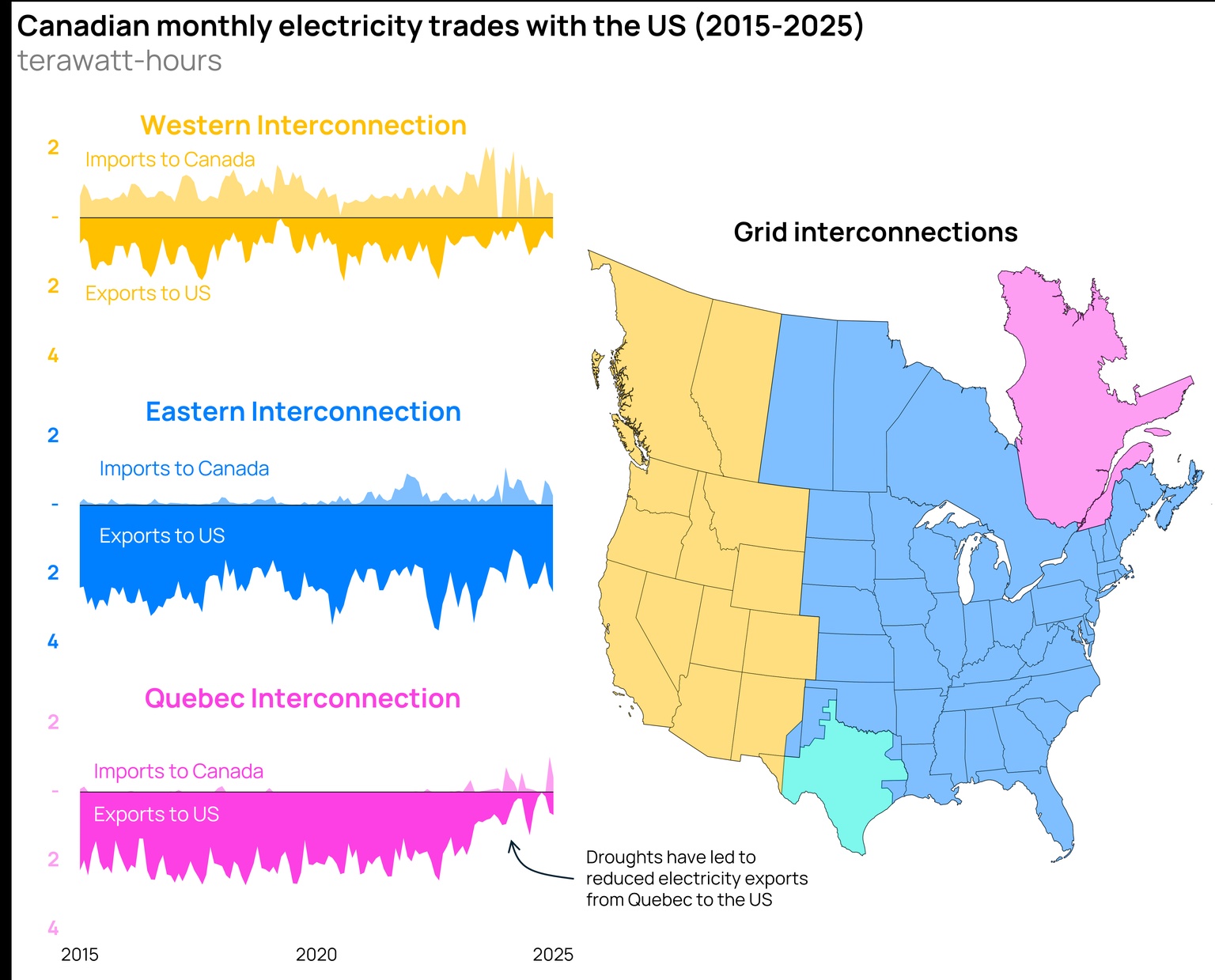
Canadian International Merchandise Trade
British Columbia faces similar challenges out west. With its drought dating back to 2022, water levels in the Columbia River have been falling for years. The Wall Street Journal reported how the 142-mile-long Arrow Lakes Reservoir receded from the lack of rain and snowfall, uncovering a town last seen when the area was flooded in the 1960s.
BC was forced to import power from both Alberta and the US to meet demand from its residents and businesses while water restrictions were instituted across the province, including in Metro Vancouver. Though, because it imports American renewable power when it’s cheap and then exports its hydropower in times of higher demand, the province plays into the power markets advantageously.
Despite the problems facing other provinces, the threat from Ontario’s premier to add an export charge on or even withhold deliveries of electricity is not without merit. While a quarter of the province’s electricity is generated from hydro, more than half comes from three nuclear plants, including the colossal 6.6-gigawatt Bruce Nuclear Generation station, the second largest in the world.
As a result, unlike Quebec and British Columbia, Ontario’s power production has been less impacted by the years-long drought.
The play: Ontario was the largest exporter of electricity to the US last year, sending more than 12 terawatt-hours’ worth of power south, predominantly to New York and Michigan. Given that Michigan was one of the key swing states in last year’s election, Premier Ford riling up the Wolverine State off the back of White House tariff policies might be just the screw that needed to be tightened for the White House to back off.
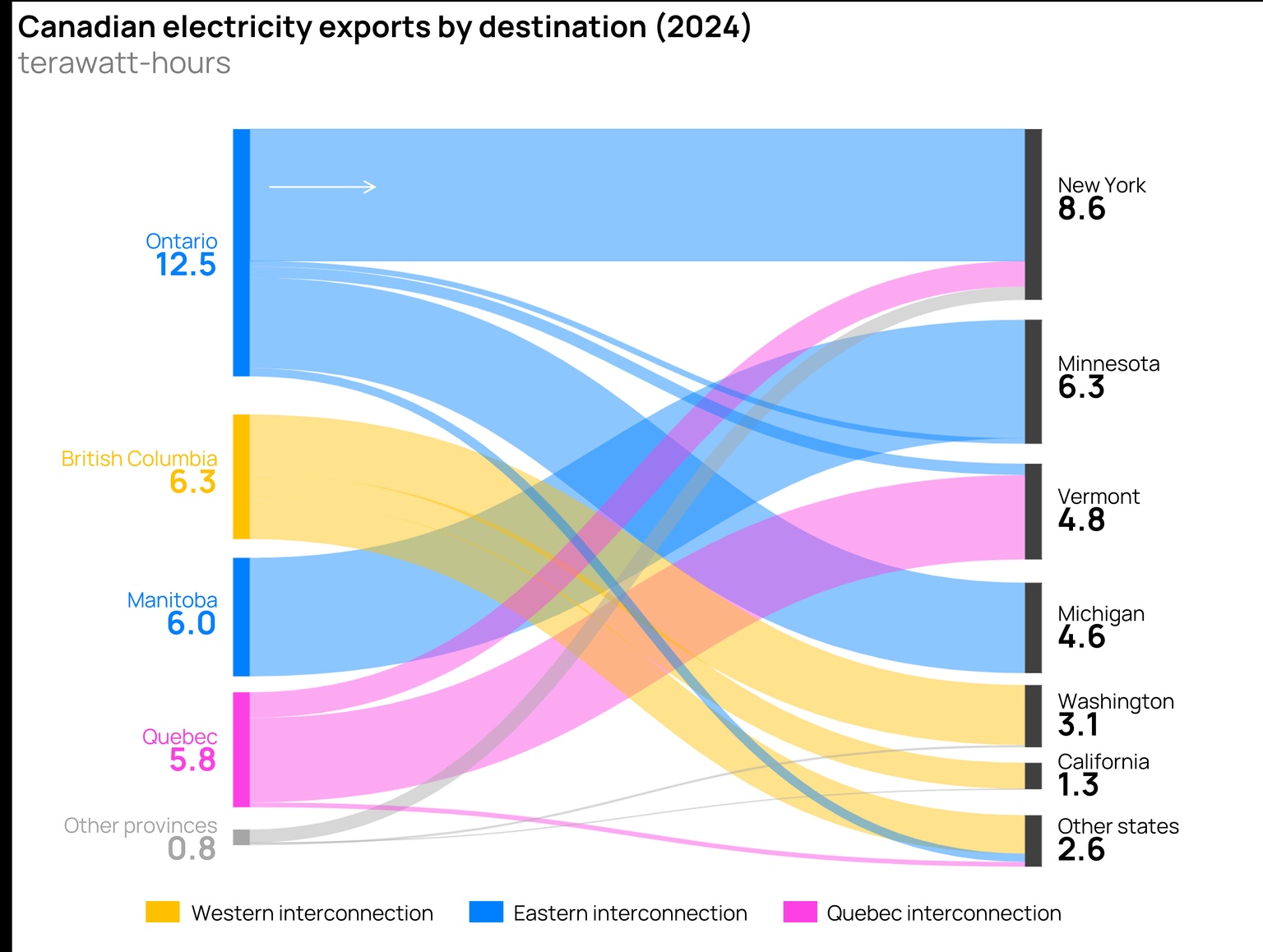
Canadian International Merchandise Trade
Unfortunately for the premier, Ontario found its electricity export threat was more squirt gun than bazooka.
There are a couple issues with the premier’s plan. For one, Canada has been bringing in nearly as much electricity as it’s been sending out since the onset of the drought. While Ontario holds the cards in its trading relationships, British Columbia does not. The western-most province is now much more reliant on imports, bringing twice as much power north as it sent south last year. A similar pressure to what Ontario could place on the US could be applied back on BC.
The trade deficit has narrowed considerably. In 2023, Canada sold $3.2 billion worth of power to the US, 30% less than it did in 2022. Over the same period, US electricity sales to Canada jumped from $455 million to $1.2 billion.
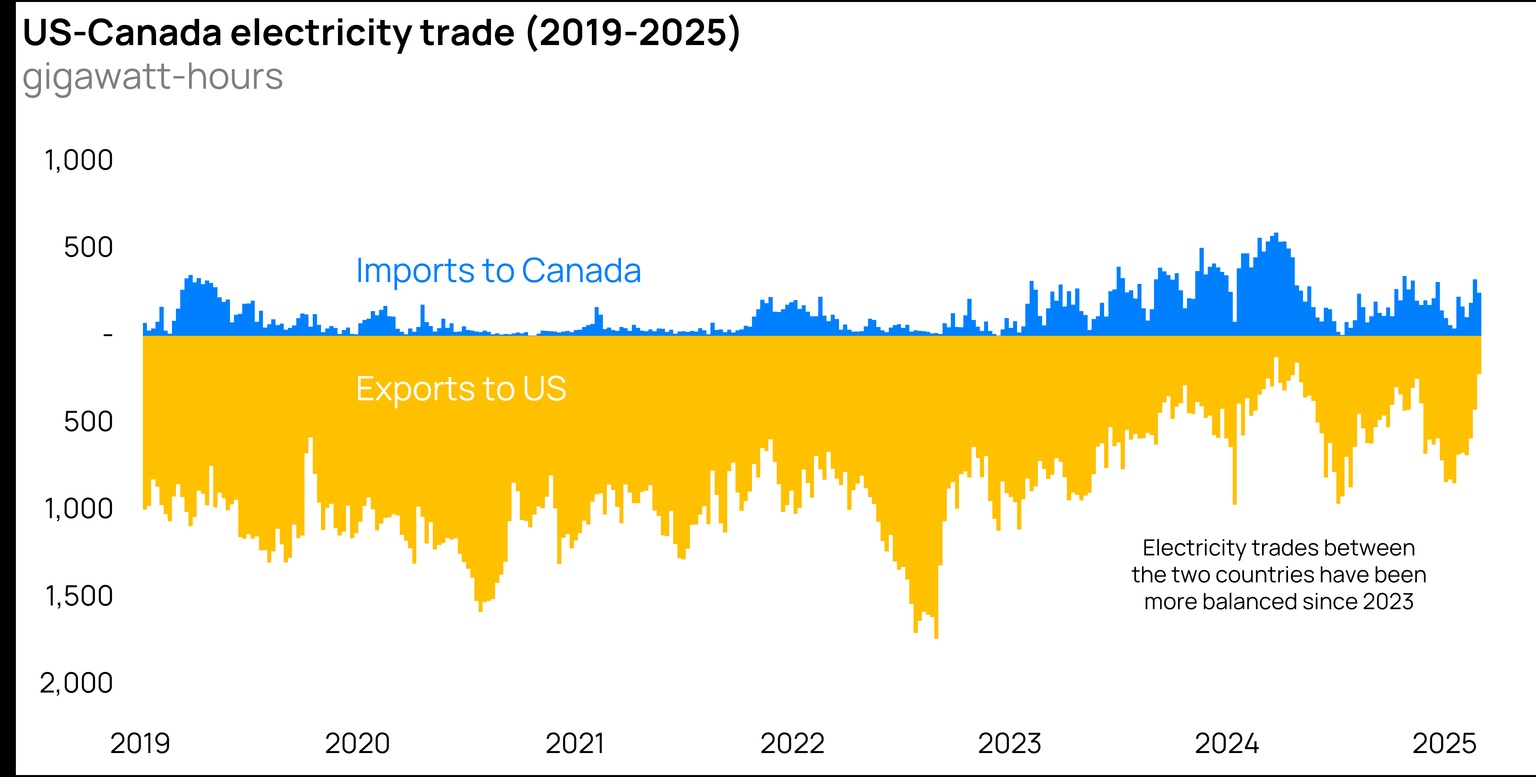
Canadian International Merchandise Trade
And even in years with abundant hydro, Canada provides just a fraction what the US uses for power. A big year for Canadian utilities would involve exporting 60 terawatt-hours to the US, less than 1.5% of its annual electricity consumption. Even in the states specifically targeted by the province, imports are limited. The Midcontinent Independent System Operator said less than half of 1% of Michigan’s electricity consumed last year came from Ontario.
And while Ontario has a large surplus of nuclear power now, its four Pickering B nuclear reactors are set to retire at the end of next year, removing two gigawatts of potential generation from the province.
Wire web worries: The main issue that emerged from Ontario’s threat was that cutting off power could impact reliability of the entire system. Michigan’s Department of Licensing and Regulatory Affairs (LARA) warned, “of greater concern is the stability of the electric grid.”
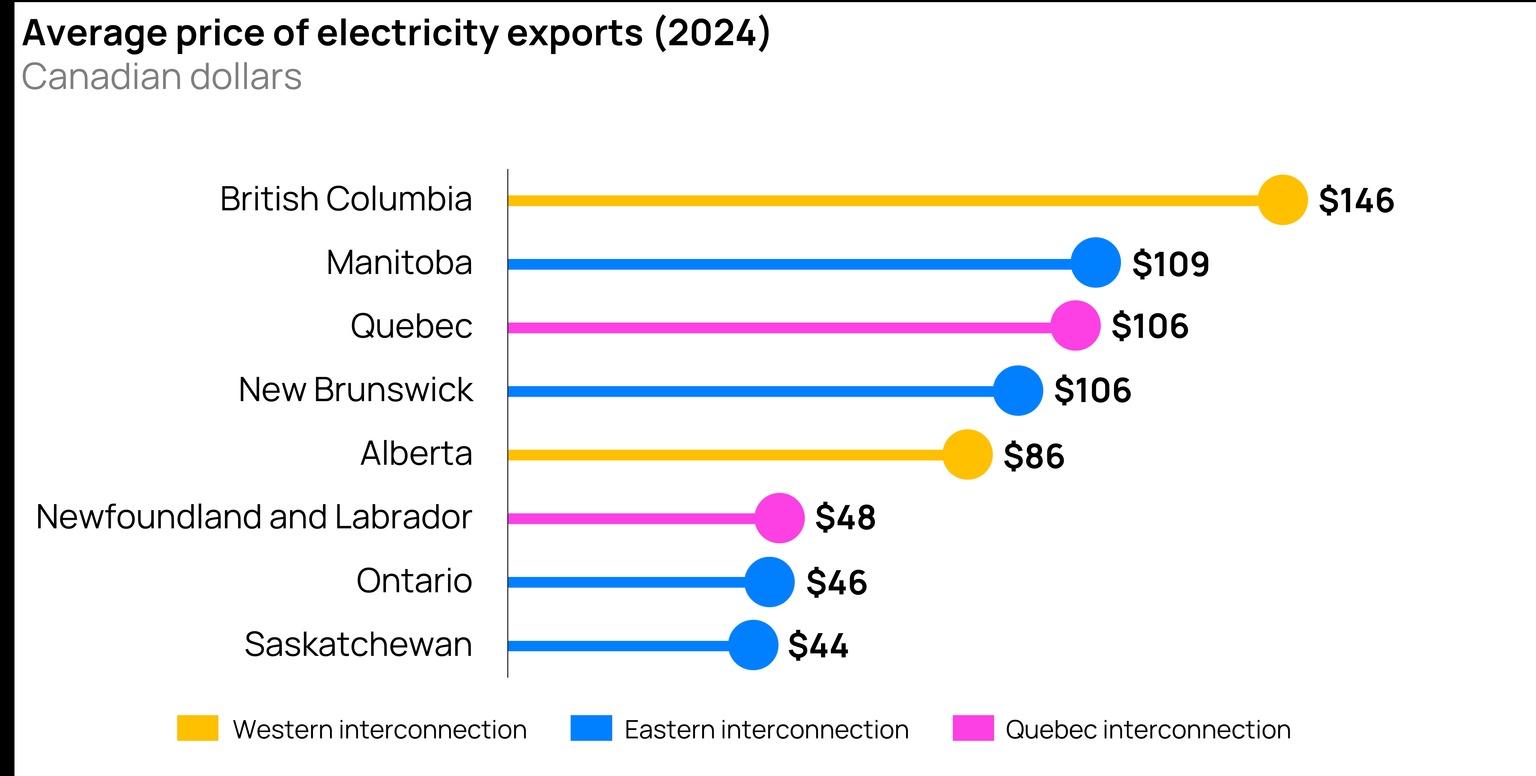
Canadian International Merchandise Trade
“There are significant flows across the border because of the interconnected grids between the two countries. These loop flows of electricity around Lake Erie happen because of the physics of managing electricity load. Any action to limit or disrupt these flows would remove a layer of protection and make all of us — Canadians and Americans alike — more vulnerable to grid-scale outages,” LARA said.
Beyond warning of the technical issues that would stem from Ontario cutting off power exports, the Michigan department’s comments bring to light the folly of the entire energy trade war: the US and Canada are an integrated energy system. It’s not smart to mess with it.
In 1965, a component failure in one of the transmission lines moving electricity from one of the first Niagara Falls power plants caused a blackout for over 30 million people across Ontario and the US Northeast in the middle of winter. It was the interconnectedness of the American and Canadian grids that allowed Ontario to restore power to the region and avoid a catastrophe.
During the 1970s oil crises, it was Canada’s abundance of hydropower paired with cross-border transmission lines that helped the US wean off its oil-fired power plants.
Bottom line: The US and Canada have been working together to build an integrated energy system, including power projects, transmission lines, pipelines, refineries, railroads, agriculture, critical mineral mining and uranium supplies, for the last 120+ years. The stability and reliability of that system has benefited citizens on both sides of the 49th parallel.
It’s no time to stop now.
Data-driven insights delivered to your inbox.